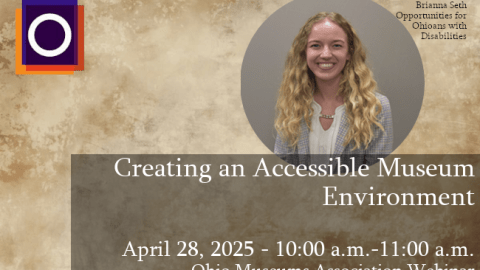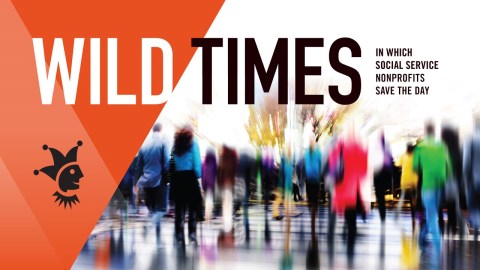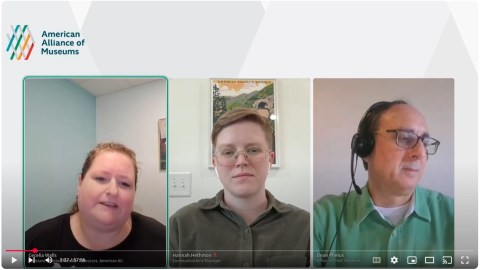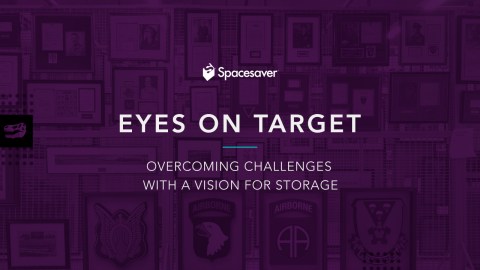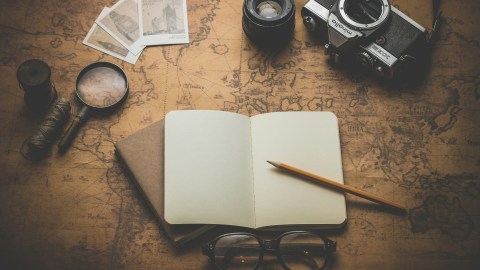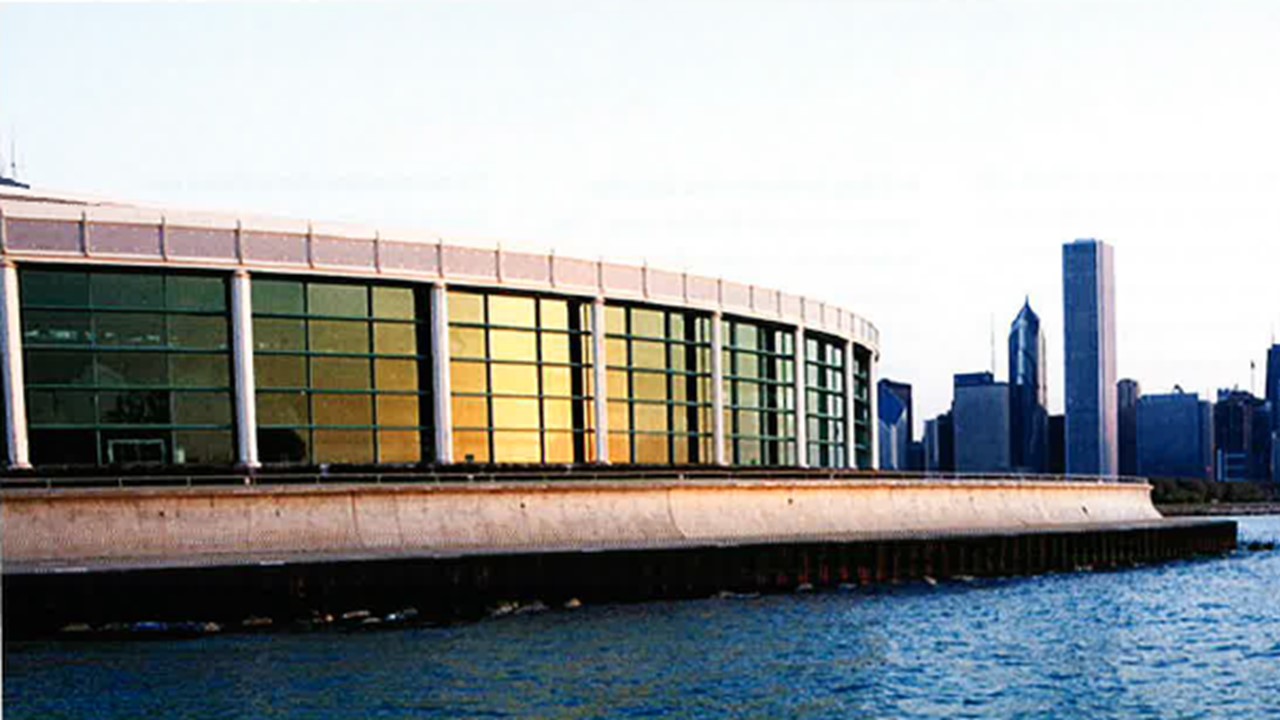
This article originally appeared in the March/April 2014 issue of Museum magazine. A benefit of membership in AAM.
ON ONE FROSTY DAY in December 1929, the frozen shore of Lake Michigan buzzed with life. Thousands turned their collars against icy winter winds, trekking to reach a newly formed peninsula along central Chicago’s waterfront. Next door to the Field Museum, a new structure emerged as if from the lake itself: the shell of the John G. Shedd Aquarium.
At that time, the building was vacant save for a freshwater pool stocked with the types of fish, reptiles and amphibians that could be found in local waters – a consolation for the emptiness of the facility. Before long, the institution was transformed as Shedd’s founders set out to bring home the wonders of the sea and create the largest, most advanced, aquarium in the world. Railway cars specially fitted with refrigeration coils, steam heaters, compressors and pumps shuttled a million gallons of seawater from Florida to Chicago to fill empty tanks. Exhibits were stocked with marine life, and by its official opening in May 1930, Shedd was the first inland aquarium with a permanent saltwater collection. The aquarium boasted the world’s largest variety of sea life under one roof – a credential it still holds today.
Given the cultural significance and unprecedented scale of those early saltwater exhibits, the aquarium’s founders would likely never have predicted the shift that has recently transformed the aquarium. That very first exhibit of freshwater creatures hinted at what has become the aquarium’s lasting legacy for its region: a focus on the Great Lakes. The exotic marine animals one expects to see in a major aquarium remain top draws.
But this past summer the aquarium completed a large-scale renovation of the Local Waters gallery with the opening of a revamped and expanded exhibit, “At Home on the Great Lakes.” With a hands-on lake sturgeon touch tank, a video booth where visitors can share their connection to the Great Lakes, and a media ticker displaying real-time conservation news, the exhibit’s focus is visceral and immersive. It reflects a commitment to engagement that is a cornerstone of Shedd’s growing Great Lakes Program. Much of the program’s operations might be behind the scenes to the average aquarium visitor, but they are creating powerful ripples throughout the basin.
Thirty-six million people in the United States and Canada depend on the Lakes for drinking water, jobs and recreation. The Lakes are also home to more than 3,500 plant and animal species, many of which are globally rare and unique to those waters, including dozens of threatened or endangered species. These crucial bodies of water are a commonly shared resource that require constant lobbying and advocacy in the face of ever-growing demands.
To provide leadership in effective stewardship of the Great Lakes, Shedd has attracted experts in specialties ranging from governmental affairs to aquatic ecology. The aquarium’s executives and research team advance partnerships with government agencies, nonprofit organizations and research institutions.
In the Midwest and beyond, Shedd has become a key voice on Great Lakes issues ranging from invasive species to habitat loss to sustainable fisheries. “The Great Lakes are literally steps away from the aquarium, so they’ve always been of great interest to Shedd,” explains Vice president of Great Lakes and Sustainability Michelle Parker. “Our board members have been strong champions of the lakes being a primary focus for Shedd for decades. With their support, Shedd has been able to build the thriving Great Lakes Program to what it is today.”
Executive Vice President Roger Germann represents both Shedd and the City of Chicago on the U.S. Environmental Protection Agency’s Great Lakes Advisory Board, a group of leaders and officials from Great Lakes communities who foster collaborative action and discuss solutions to complex basin-wide problems. The board recently published an advisory report that contains key recommendations for the development of the Great Lakes Restoration Initiative 2015-2019 Action Plan. Invasive species are identified in the report as top threats, in particular the extremely invasive Asian carp.
This fish species has invaded the Illinois River in alarming numbers and is now poised to enter the Great Lakes. Asian carp grow and reproduce extremely fast and are voracious plankton feeders, enabling them to quickly out-compete native fish species and alter vegetation and nutrient regimes. Spread of the invasive zebra mussel throughout the Great Lakes has already reduced plankton populations throughout the Great Lakes, and the introduction of Asian carp has the potential to push the lake ecosystem past an ecological tipping point. On top of these environmental effects, economic losses to commercial Great Lakes fisheries could be enormous. Coordinated leadership from Great Lakes leaders including the advisory board will be essential in determining a response to the threat of Asian carp, including evaluating controversial proposals to separate the Chicago River from the Great Lakes.
Shedd’s experts in science and research are also providing key leadership in addressing Great Lakes conservation issues. Vice President of Environmental Quality Allen LaPointe is a member of Illinois Lieutenant Governor Sheila Simon’s Science Advisory Committee, which is currently assessing the performance of the Illinois River Integrated Management Plan and developing an adaptive management process for river projects with the U.S. Army Corps of Engineers. Leading the charge on invasive species research, Shedd Senior Research Biologist Philip Willink is studying the non-native fish in Illinois to understand how this introduced species might affect Great Lakes ecosystems.
This project is a partnership with Loyola and Western Illinois Universities and includes diet assessment, reproductive studies and field surveys to determine how far the species has spread. In a project focused on imperiled native Great Lakes species, Willink has also partnered with the Illinois Department of Natural Resources to review and update the state list of endangered and threatened aquatic species. As part of this project, Shedd is producing state-wide distribution maps to identify key habitat gaps and prioritize areas for conservation and management. Postdoctoral Research Associate Solomon David is investigating Lake Michigan’s most commercially valuable fish, the lake whitefish, to understand why its natural migratory patterns have re-emerged after a century without migration.
This study is in partnership with the University of Wisconsin-Madison and the University of Wisconsin-Green Bay. Much of this research and leadership in Great Lakes governance takes place out of sight of visitors but intersects with the aquarium’s public outreach efforts in hands-on programs for children and teens. School groups learn about Great Lakes science from Shedd scientists in onsite Learning Labs, and high school students get hands-on training in lake ecology during week-long overnight camping trips to remote destinations including the Apostle Islands in Lake Superior.
Shedd’s educational programs will now reach even further into classrooms with the introduction of the online curriculum, “Asian Carp Exploration.” Using Asian carp as a case study, this curriculum fosters critical-thinking skills while teaching students about the connectivity and complexity of local waters. Students are challenged to problem-solve Great Lakes issues and prepare their own Action Plan in video format. At the same time, Shedd released a series of public awareness videos for adults and teens called “High Stakes of the Great Lakes,” which highlight ecological issues related to Asian carp. The videos feature interviews with stakeholders from around the basin to give a wide range of perspectives on the risks that Asian carp pose to the Great Lakes. At three minutes each and packed with quick facts and dynamic graphics, the videos are designed to encourage sharing on social media.
The curriculum and video series are the capstone of a recent push from Shedd’s Great Lakes Program around Asian carp awareness. Education efforts have reached a wide variety of audiences across multiple platforms, including some unconventional approaches. In July 2012, Shedd partnered with the Illinois Department of Natural Resources and local fishmonger Dirk Fucik to make waves at the Taste of Chicago food festival with an unusual education tactic: free samples.
Over two hours, 840 of Fucik’s “Asian carp slider” mini-burgers were snapped up by festival-goers with very positive reviews. The intent was twofold: to raise awareness about the risks Asian carp pose to the Great Lakes, and to generate a consumer market for the fish in the Midwest. Asian carp is commonly thought to be a bottom feeder with a bad taste, but Fucik says it has a texture and flavor similar to tilapia-it just needs to be run through a grinder first to remove some pesky bones. He offers free samples of the carp burgers at his store most Saturdays. While most consumers are hesitant to try the fish, they become carp converts after one taste.
Asian carp is one of many choices recommended to consumers in Shedd’s Right Bite sustainable seafood guide. The program “is a way for each individual who is a consumer, restaurateur, chef or Shedd visitor to care for the animals they also see as food sources,” explains Manager of Great Lakes and Sustainability Aislinn Gauchay. “One of the biggest impacts people can make in the health of any marine or freshwater ecosystems is the choice of what they put on their plate.”
This program began when staff were impressed by the Monterey Bay Aquarium’s Seafood Watch but found that many of the fish recommended as sustainable alternatives weren’t available on the Midwest market. To fill this gap, they partnered with the Monterey institution to develop Right Bite, a Midwest-specific, wallet-size consumer guide that facilitates easy decisions on the go. Recommendations are informed by extensive research on the methods and impacts of fisheries around the world. Seafood choices are ranked in order of preference according to the type of gear used, the amount of species accidentally caught as bycatch and trends in population of the species.
Shedd staff are also leaders in the assessment of Great Lakes fisheries and have determined that yellow perch and trap net-caught lake whitefish are best choices for sustainability, while walleye and yellow perch are good secondary alternatives. Right Bite program staff paid visits to several fish farms across the United States to personally evaluate their methods, and feature products from these farms at Shedd events. Winners in the sustainable farmed fish category so far include sustainably farmed paddlefish caviar from Big Fish Farms in Bellevue, Kentucky, and farmed rainbow trout from Rushing Waters Fisheries in Palmyra, Wisconsin.
In 2007, Shedd received an award for Public Education, Community Service, and Media from the National Oceanic and Atmospheric Administration’s Sustainable Fisheries Leadership program. Shedd was recognized for demonstrating leadership in consumer education and for its institution-wide commitment to feed its thousands of exhibited animals with as much sustainable seafood as possible.
The connection between the sustainable harvest of Great Lakes fisheries and Great Lakes conservation might seem tenuous or even contradictory. Some, particularly on social media, have criticized the aquarium for being an advocate for conservation of aquatic ecosystems while at the same time encouraging the harvest of sustainable fisheries. Gauchay, however, explains that the aquarium hopes that “the program will inspire people to make a difference by connecting animals in our care here to animals in the wild.”
On a busy day at the “At Home on the Great Lakes” exhibit, the connection between fish harvest and conservation is clear: at one end of the gallery, a father points to a walleye and tells his daughter about a favorite lake to find them; moments later, in front of a tank where a largemouth bass shelters under a rock ledge, a man tells his grandson that knowing this habit is a trick to catching them. “Look for the big rocks,” he says. “That’s where they hide.”
Through these stories of lakes and rivers, the associations that children make with fishing are connections to the sustainable harvest of food. Family traditions of angling and exploring the outdoors have the potential to inspire a new generation. The fish that visitors can see and touch in the Great Lakes exhibit are a tangible connection to lake ecology. These are the creatures that nibble our toes while we are swimming or that we catch for dinner in our favorite lakes and rivers.

